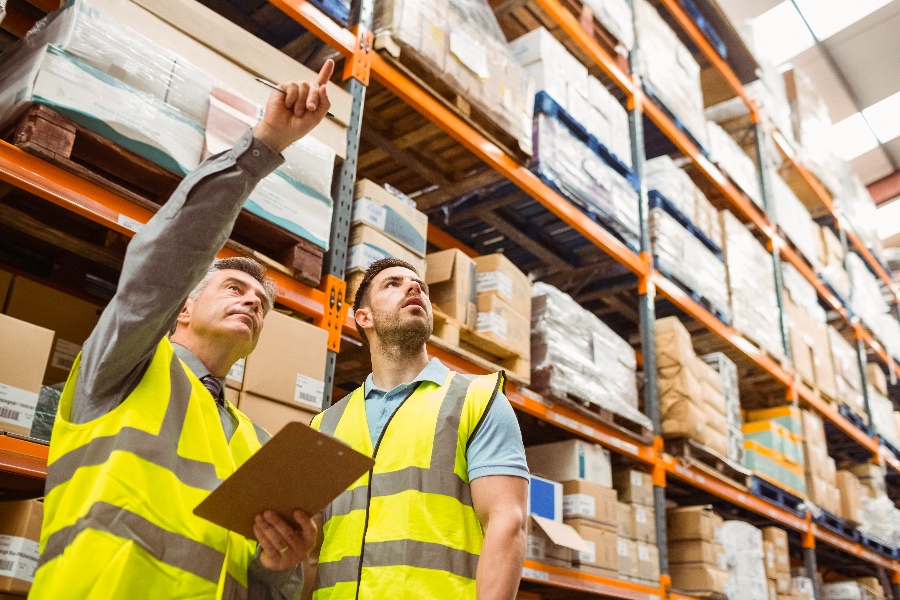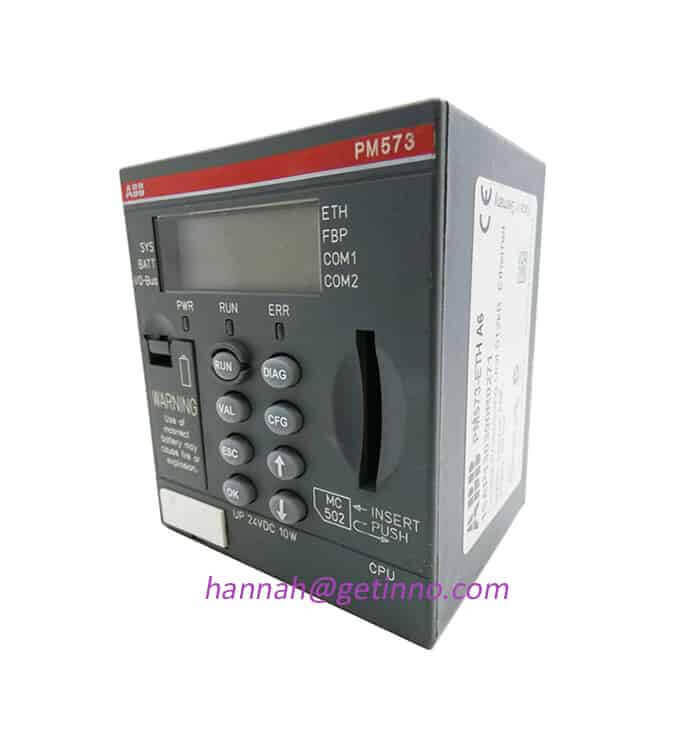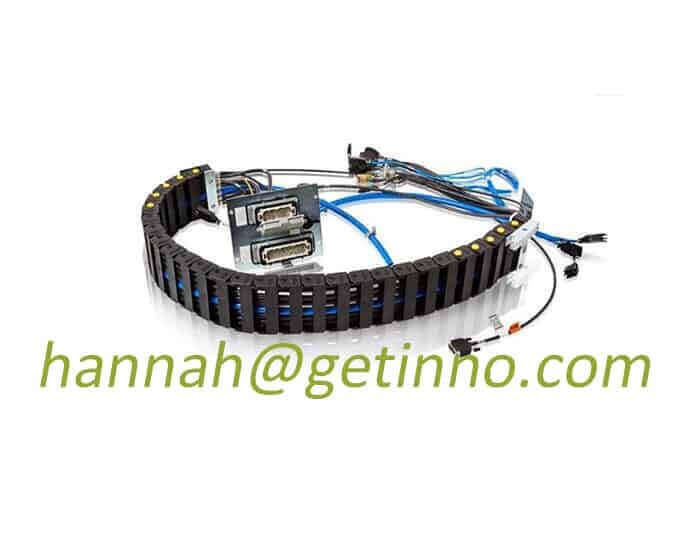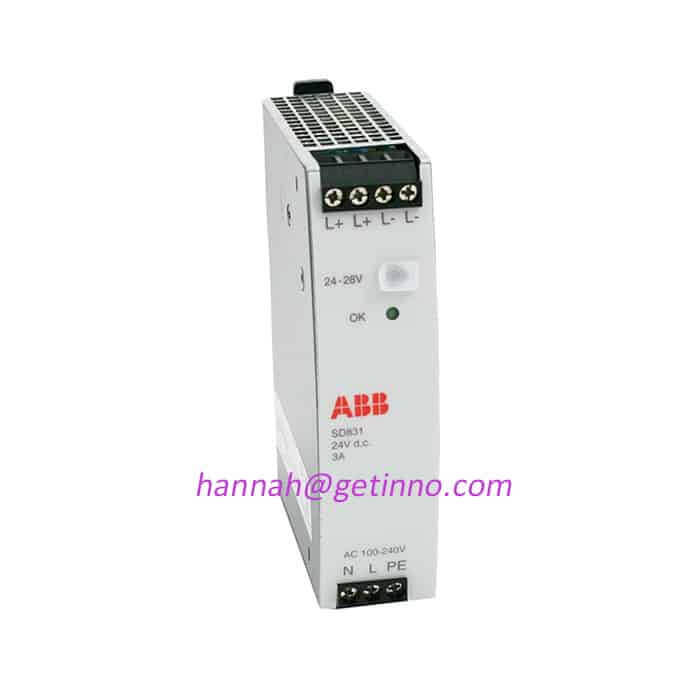Driven by logistics technology, couriers are out?

The trolley was full of express parcels of different sizes, and the SF Express courier pressed down to the 10th floor in the elevator. Arriving at the front desk of Yiou, he used the SF Express APP to scan the QR code on the electronic face slip, and took away a batch of express packages to be sent.
Most of the customers who send express delivery have not noticed that paper face sheets and hand-held code scanning guns have disappeared for a long time. Unconsciously, this industry has quietly entered the era of technological logistics from the primitive “slash and burn”.
From Robotic arms, conveyor belts, and automatic three-dimensional shelves in warehousing, to intelligent capacity allocation and intelligent route planning in transportation, to intelligent order distribution at the end of distribution, drone distribution, and intelligent express cabinets, the original “earth and stupid” In the logistics industry, every link is now filled with a strong technological factor.
However, the logistics industry surrounded by technology shows another scene in the logistics pattern:
Under the rendering of technology, express delivery companies pay more attention to customer experience, and then continue to test the edge of business and develop new projects, resulting in an increase in the number and pressure of terminal delivery personnel;
The consumer-oriented express delivery companies have a large amount of technology investment, a high degree of application, and the corresponding profitability is also significantly improved, while the enterprise-oriented express delivery companies have the same level of technology investment as the express delivery companies, but technology penetration is slow;
With the help of capital, the integration of express delivery market and the acceleration of mergers and acquisitions have formed three forces dominated by Cainiao, JD.com, and SF Express. Coupled with Pinduoduo, which occupies a quarter of the national express delivery market, it intends to establish its own logistics platform, prompting The express delivery market is changing to the e-commerce logistics market.
Technology “drags” couriers
Under the background of the rise of e-commerce, the number of express parcels in China has increased exponentially, and ultimately these “burdens” have been placed on express companies represented by “four links and one delivery”.
On Double Eleven in 2013, Taobao + Tmall’s orders exceeded 100 million for the first time, and “explosive delivery” became a hot word on the internet for the first time. In 2014, my country surpassed the sum of developed economies such as the United States, Japan and Europe with 14 billion express orders, becoming the world’s largest express delivery country.
Driven by the vigorous development of e-commerce at that time, the upgrading of the logistics industry has been about to move. The cluster phenomenon of Industrial upgrading was first reflected in Cainiao, which is positioned in the intelligent backbone network. Cainiao, together with Tongda Department and other 14 express companies, jointly launched an electronic face single platform, unified various data standards, planned express routes, and collected parcels from express orders. The link begins to shorten the distance of information transmission.
Next, Cainiao launched the first cloud computing-based logistics basic information service platform in 2015, using cloud processing capabilities to show users the timeliness and accuracy of logistics and transportation details;
For the first time, JD.com announced the use of Shanghai’s “Asia No. 1” modern logistics center with automatic storage system, automatic picking racks and automatic conveying equipment, which is fully prepared for the double 11 promotion. They have realized the digitization of the infrastructure of the logistics industry by building a logistics infrastructure driven by technology and efficiency.
In 2016, logistics technology showed an “amazing” side in the transportation sector. Amazon used drones to deliver express parcels for consumers for the first time; DHL Group delivered more than 130 express parcels by drones in Bavaria, Germany; China’s first unmanned delivery vehicle independently developed by JD.com started road testing; Cainiao and Xinyi The automated warehouse operation center built by technology operates in Guangzhou.
Hardware equipment and technologies such as automated sorting equipment, AGV, intelligent warehousing, intelligent decision-making, and unmanned delivery vehicles have gradually become the rigid needs of major express delivery companies. The entire logistics and transportation process is filled with ization and transparency.
However, with the acceleration of the technological process of the express delivery industry, a new problem has emerged:Will the intelligentization of the logistics industry lead to mass unemployment of couriers?
At the 2017 Global Smart Logistics Summit, Jack Ma left a prophecy about “logistics technology and couriers”: “Every technological revolution will bring huge unemployment, but the real new technology is to let people do it. More valuable things. Many couriers who are finally organized today may lose their jobs because of Robots, because of driverless cars, and today’s concept of drone delivery is relatively good.”
Up to now, the number of couriers has not developed in the direction Ma Yun predicted, but the opposite.
In the peak season of Double Eleven in 2019, the business volume of the national express delivery industry reached 2.8 billion pieces, and the maximum daily processing volume reached 520 million pieces. In other words, the country’s 2.1 million front-line couriers need to deliver more than 240 pieces of courier every day on average.
This is a seriously “overloaded” number. In order to make up for the lack of delivery capacity at the end of the peak period, various express delivery companies have generally strengthened the reserves of terminal personnel, venues and vehicles, and temporarily replenished nearly 400,000 people.
Couriers are in a race against time almost all the time. The Yunda courier told Yiou that no matter the peak or the usual time, he worked from 6:00 am to 10:00 pm; the Yuantong courier who has worked for seven or eight years also said that a few years ago, the delivery was about 120-130 tickets, and now the lowest is There are 300 votes; during the peak period of Double Eleven, many people even received text messages from various couriers in the early morning: “The package is placed in the water meter box opposite you, pay attention to check it”.
The person in charge of the SF Express site next to Jumei Home Furnishings in Chaoyang District introduced to Yiou that automated sorting equipment is used more in headquarters such as distribution centers and transit warehouses. Finally, it is dispatched to the station, and the courier needs to sort the package to the delivery area by himself.
According to data from the 58.com Recruitment Research Institute, in the first half of 2019, the demand for recruitment that included the word “courier” increased by a multiple of the same period last year. Among them, the year-on-year increase in April 2019 was the highest, reaching 271.96%, followed by a year-on-year increase of 162.27% in June.
Liu Dacheng, deputy dean of the Internet Industry Research Institute of Tsinghua University, director of the Logistics Industry Research Center and doctoral tutor, told Yiou that the technological application of logistics is mainly reflected in the following aspects:
One isDigital technologyto achieve precise docking of the whole logistics process, and realize node, network, vehicle and cargo matching, etc.;
two isequipment basisautomatic sorting, automatic operation, automatic loading and unloading and other equipment technologies;
The third isIoT technologyto realize real-time monitoring of goods, vehicles and personnel in logistics and transportation;
Four isThe acquisition capability of the overall system has been strengthened;
five ispolicy supportThe computer’s decision support ability helps enterprises to make predictions and decisions.
That is to say, in the long run, Jack Ma’s point of view is right. The logistics technology of express delivery companies is reflected in the hierarchical stages of warehousing, sorting centers, and cargo transit centers. But at present, technology has not reached the level of the entire logistics chain. In addition, express delivery is in the growth stage, and the relevant personnel have not been relieved from the work pressure for the last mile of delivery at the end.
In the link from site to end distribution, manual operation still accounts for the vast majority of the workload. The application of logistics technology, while improving efficiency, actually shifts the labor focus of industry practitioners to those jobs that cannot be replaced by machines.
However, the intelligence of the terminal distribution link is also beginning to take shape. For example, the increasing use of smart express cabinets has replaced part of the work of couriers.
“Uneconomical” research investment sales
The phenomenon of polarization in the application of science and technology in the field of logistics has gradually emerged. For example, listed express delivery companies have a high degree of technologicalization in links with high process standardization, and the profit effect obtained by scientific research investment is directly proportional to the investment.
On the other hand, express companies are in a state of disarray and poor concentration. They do not have enough capital to support their technological development and application, resulting in insufficient technological penetration and unsatisfactory results.
The word “explosion” is a high-frequency negative word that appears during the peak period of e-commerce business on Double Eleven. The high technology of AGV and automatic sorting equipment in the warehouse has not achieved complete intelligence, and express delivery companies still have to face It is caused by the backlog of warehouse goods, the increase in consumer complaints, the gap between peak season profits and off-season losses, and the test of anti-risk capabilities.
Before logistics technology became a system, these were very difficult problems to solve. However, the rapid development of the e-commerce market and the increase in users’ demand for services are forcing logistics companies to continue to innovate themselves.
In 2016, private express delivery companies such as SF Express, Yuantong, Shentong, and Yunda were collectively listed and landed in the capital market. The 7 listed express companies have formed a cluster of enterprises with an income of over 100 billion yuan and 4-5 enterprises with an income of over 50 billion yuan.
In addition, Ali’s continuous investment in Zhongtong, YTO, Shentong, and Best Enterprises has given express companies a steady stream of impetus to continuously increase the proportion of scientific and technological research and development investment. From 2015 to 2018, Tongda, Best and other express delivery companies have increased the amount of investment in automation equipment year by year, and increased the use of automation equipment in logistics and transportation such as warehousing, distribution centers, and transit links.
In terms of technology and information IT, in 2018 alone, SF Express, Zhongtong, YTO, Shentong, and Best invested RMB 2.723 billion, RMB 155 million, RMB 50.6294 million, RMB 43.6214 million and RMB 58.1 million respectively.
Shentong Yiwu Distribution Center was officially launched, with 350 robots operating at the same time to speed up the sorting of goods; Yuantong took the lead in developing and launching invisible face sheets to enhance the security of users’ personal information; Yunda issued shares to raise 4.517 billion yuan for intelligent Warehouse and distribution integration and transfer center automation upgrade projects; Zhongtong plans to realize the unmanned operation of some distribution centers by 2020.
Express delivery and express delivery are two different business development. The express delivery business is different from the express delivery business. It mainly focuses on factory parts and provides B2B services. In addition to the low delivery frequency, the average ticket weight is too large.
For this reason, the market structure of express delivery is uncertain and the market is fragmented. Neither leading companies have surfaced, nor “leaders” like Ali. Even the price war that is starting now has entered the situation of the express delivery market ten years ago. However, in terms of research and development, Debon, Yimidida, etc. have invested hundreds of millions of yuan.
From 2016 to 2018, Debon’s annual R&D expenses were more than 300 million yuan. In terms of digital management, Debon has launched intelligent management systems such as Smart Field Station and Debond System; in terms of transportation and delivery, intelligent collection and delivery, integrated sorting of large and small pieces, Debon D PLUS and other equipment have been launched.
Yimidida, which received the D round of financing, also intends to use 1.8 billion yuan in financing for customer acquisition, core operation nodes, and intelligent technology research and development and investment to promote its own digital transformation and upgrading. For example, the intelligent dispatching center operated by it can form monitoring, early warning, command and other functions on the goods.
Aneng Logistics invests more than 100 million yuan every year for the research and development of information systems and the introduction of automation equipment. It has a professional information technology research and development team of nearly 200 people. Brand” APP, assistants can quickly place orders and send and receive parcels.
In the process of increasing business volume, the increase in the number of machines amortizes the fixed cost of the enterprise and reduces the marginal cost, thereby reducing costs and increasing efficiency.For example, the efficiency of automated sorting equipment is more than 10 times that of traditional manual sorting. In the past three years, the per capita efficiency of only the terminal courier has increased from 80 to about 100. Express parcels that were delivered in three to five days in the past can now be delivered on the same day and the next day.
Continued investment to promote infrastructure upgrades also provides companies with stronger competitiveness and profitability. In 2018, the profits of Zhongtong, Yunda, Shentong, and Yuantong reached 4.383 billion, 2.698 billion, 2.049 billion, and 1.904 billion yuan. Only Best is in a state of loss.
On the other hand, the situation of Debon, which landed on the Shanghai Stock Exchange in 2018, is not optimistic. After the transformation of the large-scale express delivery field, the performance continued to be sluggish. In the first quarter of 2019, it lost nearly 50 million yuan. Since then, profitability has been declining. By the third quarter of 2019, compared with 459 million yuan in the same period in 2018, it had fallen by 75.7% year-on-year. Debon still has problems such as high debt ratio and deteriorating cash flow.
The scientific research investment of express and express is equally divided, but the results are not as optimistic as express. Yang Daqing, a special researcher of the China Society of Logistics, told Yiou that, first of all, the closer the logistics of living materials to the C-end customer group, the higher the degree of free market competition, the lower the entry threshold, the more scattered market resources, and the easier it is to be shuffled by digital technology. , such as express delivery, real-time logistics and other living materials logistics related to people’s livelihood consumption, with a high degree of technology application.
The closer to the production materials logistics of the B-end customer group, the higher the industry threshold, the lower the market activity, and the more difficult it is to change the inertia of the service chain. The logistics market serving the B-side is a larger gold mine. However, markets including energy logistics and steel logistics are highly intensive, and technology penetration is slow.
Secondly, problems such as the inconsistency of transportation methods and the fragmentation and differentiation of technology applications also indirectly lead to high logistics costs and low technology popularization. Railway transportation only accounts for 5%-6% of all freight in China, highways account for 86% of freight, and transportation by water and air accounts for about 10%, which is enough to prove this point.
In addition, SF Express, Tongda and other companies occupy more than 70% of the entire express market, while the concentration of express companies is only 2.9%, and the road freight industry concentration is only 1.2%.
Liu Dacheng also believes that the higher the industry concentration, the easier it is to form a large-scale industry, and the more extensive and deep the application of logistics technology will be. In the express delivery field with poor industry concentration, it is easy to form scattered, small, and chaotic situations. Enterprises have poor bargaining power for premiums, weak financing accounts and cash flow, and there is not enough capital to support the development and application of logistics technology. Now that the entire express industry is in a recession, it is even more difficult to use heavy assets to upgrade technology.
The heavy asset investment of logistics technology in the express delivery industry, drones, unmanned warehouses, etc. are more in the exploration and trial stage. At present, it is difficult to produce direct and ideal effects. However, the emergence and application of new technologies is conducive to capital’s attention to the development of this industry, which can increase the vitality of the industry, not necessarily the actual operating capacity.
Since the development of the logistics industry, the requirements of the capital market for the profitability and return on investment of enterprises are constantly improving, which itself is the price for an industry to attract capital.
The express delivery market is being restructured
Ali invests in weaving its own logistics network, including half of the express delivery market under its banner, strengthening the connection between e-commerce and express delivery. JD.com, which has built its own logistics, on the one hand strengthens its own technological control, and on the other hand, through splitting or independence, it wants to make JD Logistics a logistics technology service provider with an annual revenue of over 100 billion yuan.
In addition, as the leader of the private express delivery industry, SF Express has been facing the encirclement and suppression of the rookie department and JD.com, and began to rush to break through and embrace the e-commerce market. Coupled with the rise of the e-commerce company Pinduoduo, it has also stirred up the “muddy water” in the logistics market. The evolution of a new pattern in the logistics market is kicking off.
Since 2016, the express delivery market has been deeply integrated, and major enterprises are all moving towards the direction of comprehensive logistics enterprises. Zhongtong entered the field of express delivery and officially launched investment promotion and franchising across the country; Yuantong expanded large and heavy cargo transportation, warehousing and other fields; Yunda proposed the development strategy of “one body and two wings”;
The listed express delivery companies have accelerated the transformation of the entire express delivery market and quickly abandoned the second echelon. Quanfeng, Guotong, Rufengda, etc. were gradually eliminated.
At this time, Cainiao has completed the first round of financing, and has spent 1 billion yuan to start the “Cainiao Alliance”, and launched products such as one-day delivery and next-day delivery. In 2019, Ali used another 23.3 billion yuan to increase its holdings to increase its support for Cainiao.
Jack Ma once publicly stated that he would not touch express delivery and logistics, and “won’t grab the business of express delivery companies”, but in fact, in May 2019, Cainiao established its own brand landing matching company “Daniao”, and it will almost be accessible All are included under the banner.
At present, Cainiao has invested in or held shares in express delivery companies such as ZTO, YTO, Shentong, and Best, as well as instant logistics companies such as Dianwoda and Hummingbird. In the future, Ali will most likely look for opportunities to invest in Yunda.
Ali uses financial bonds to link the e-commerce ecology and new retail formats, open up warehouse and distribution resources, and enhance the right to speak and influence on express delivery companies. The smart logistics backbone network built by Cainiao has achieved digital upgrades for the entire logistics industry from the perspective of technology and supply chain, driving industry progress.
The strength of JD.com and Suning itself is enough to support a logistics world. From the beginning of his business, Liu Qiangdong believed that only self-built logistics can fundamentally solve the problem of logistics services.
After Jingdong obtained the first round of financing in 2007, Liu Qiangdong insisted on building its own logistics, and did not hesitate to burn money on a large scale. After 12 consecutive years of losses, JD Logistics is just beginning to break even. In the future, JD Logistics will also be listed independently. At the beginning of 2017, Suning spent 4.25 billion yuan to acquire Tiantian Express, which had been “changed owners” many times, hoping to integrate with it in warehousing, trunk lines, terminals, etc., and strengthen Suning Logistics’ last-mile distribution capabilities.
SF Express has gradually been impacted by e-commerce parcels in the field of express delivery, and began to look for a breakthrough point. In Vipshop’s Pinjun Express, the speed of spending can never keep up with the speed of profit. Vipshop’s painstaking efforts have not achieved good results. Pinjun is completely closed and incorporated into SF Express.
Compared with Alibaba, JD.com, and SF Express in e-commerce logistics, the emerging Pinduoduo seems to be about to break the original three-pronged situation and become a new level. Pinduoduo’s order business has grown so fast that its market value surpassed that of JD.com in a short period of time, becoming China’s fourth-largest Internet-listed company by market value.
Pinduoduo started in the sinking market, and more than half of the parcels flowed to the third- and fourth-tier cities, as well as the vast counties and rural areas, accounting for 25% of the total express delivery market in China in one year, becoming the second largest source of orders for express companies. The order is in a state of three or seven points, and the incremental market brought by it is “envying” by Ali and JD.com.
Pinduoduo, which once said that it “will never intervene in logistics”, has now begun to try out its own electronic bills and develop a “new logistics” technology platform.
The competition pattern of the express delivery market seems to have evolved into the market competition pattern of e-commerce logistics. The essence of e-commerce competition is not traffic, but the supply chain that promotes value realization. The large flow of Pinduoduo leveraging capital leverage requires a digital logistics cornerstone to build a digital logistics hub.
The power of capital intervention is always strong, it can allow logistics enterprises to quickly complete the integration of upstream and downstream of the industrial chain and complete the layout of the ecosystem; at the same time, enterprises can rapidly expand the scale of enterprises through effective operation of capital, increase and compete with each other. The opponent’s counterweight.
The restructuring of the express delivery market by giants and the all-round intervention of capital have brought about clear changes in the ecology of the express delivery industry.
end
Express delivery companies are a collection of networks, ecology, culture, products, services and systems.In the development of the logistics industry driven by technology, the final delivery terminal is an important link connecting merchants and users, from online to offline, and it is also the link with the most pressure and the most topics. The cost reduction and efficiency increase of enterprises is also reflected in the courier. And their speed up, not only represents the scientific and technological achievements of the company, but also reflects the overall service quality of express delivery.
Residential communities, office buildings, universities, and business districts have become the places with the most couriers. If measured in terms of community units, a large community of 10,000 people generally needs to be equipped with 20 couriers. Ten years ago, a community only needed 2-3 delivery workers.
Coupled with the in-depth penetration of e-commerce retail and the rise of instant delivery, the contact between couriers and the community has become closer. From simple transportation and distribution personnel to “technical flow”, the proportion of couriers who come to provide services to residents has been very high.
As the SF Express brother said: “Only when the company grows and develops well, the physical strength of employees can be reduced and the efficiency will be improved.”
The role of technology in this is crucial. Although the current development stage of emphasis on process and light on terminal means greater work pressure for couriers. However, from the perspective of express delivery companies, armed with technology, their role in linking Internet companies and communities has become more and more important.
Ms. Liu, a retired teacher in Chaoyang District’s Xiuju Garden, said that couriers shorten the distance between merchants and users, which is mutually beneficial to both parties, and also represents the progress of enterprises and society.
Mr. Gao of Jasmine Garden of Beiyuan Homeland believes that the high-tech applications of express cabinets, post stations and other sites not only bring convenience to our lives, but also bring us a great sense of security.
Express companies are using technology to carry huge business volumes, and use speed to deliver cold packages, from warehousing, storage, to packaging, sorting, loading, to intermediate transportation links, and then to the last mile of delivery. Robots, Unmanned vehicles and drones are taking away the non-creative jobs around us step by step.Although technology is still “dragging” couriers, the future, as Jack Ma said, will be “replacement”.
The Links: 3HAC14178-1 INNPM22 IGBT
Pre: Meet by the Jinji Lake | Inovance Tec... Next: This year’s sales exceeded 10,0...




